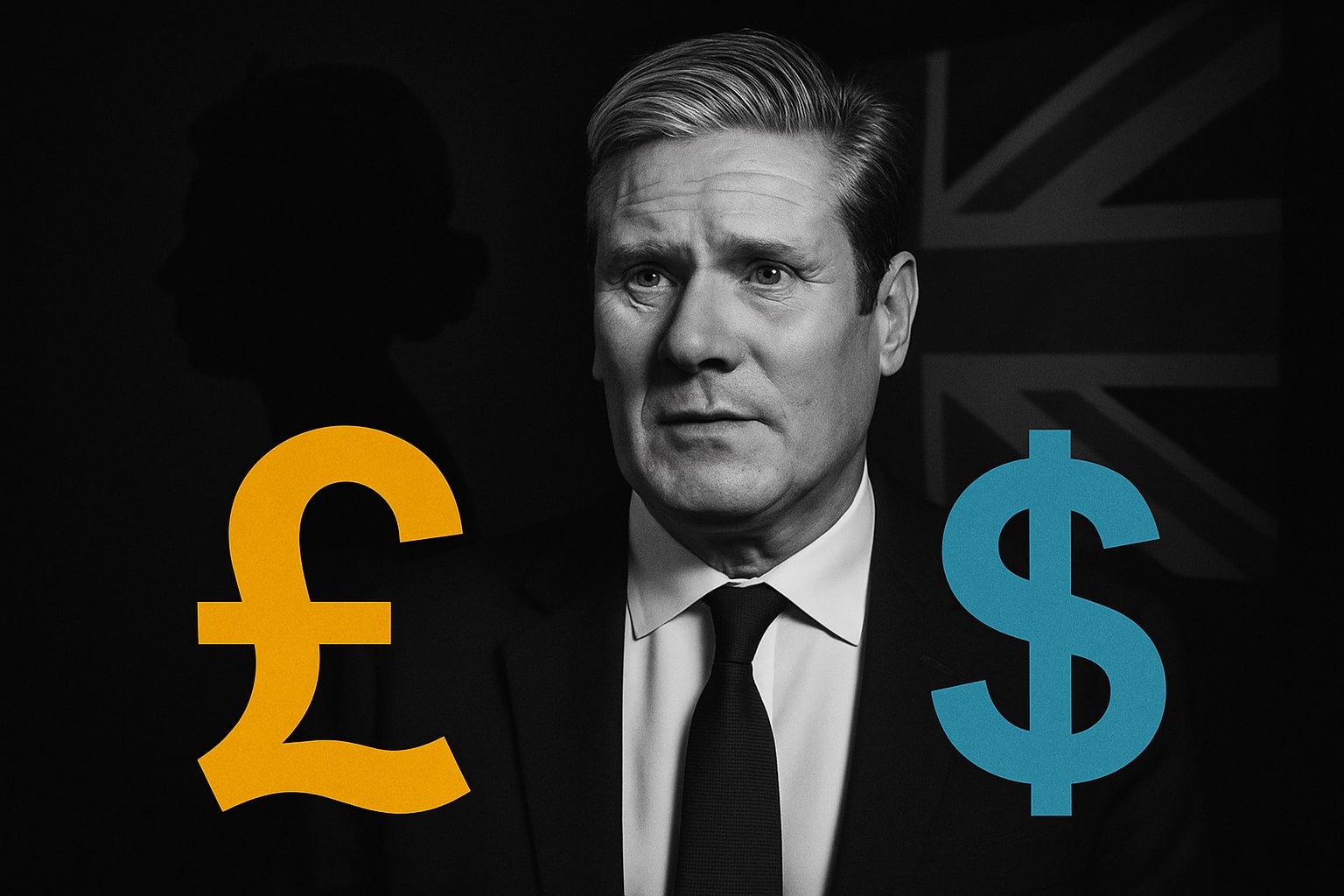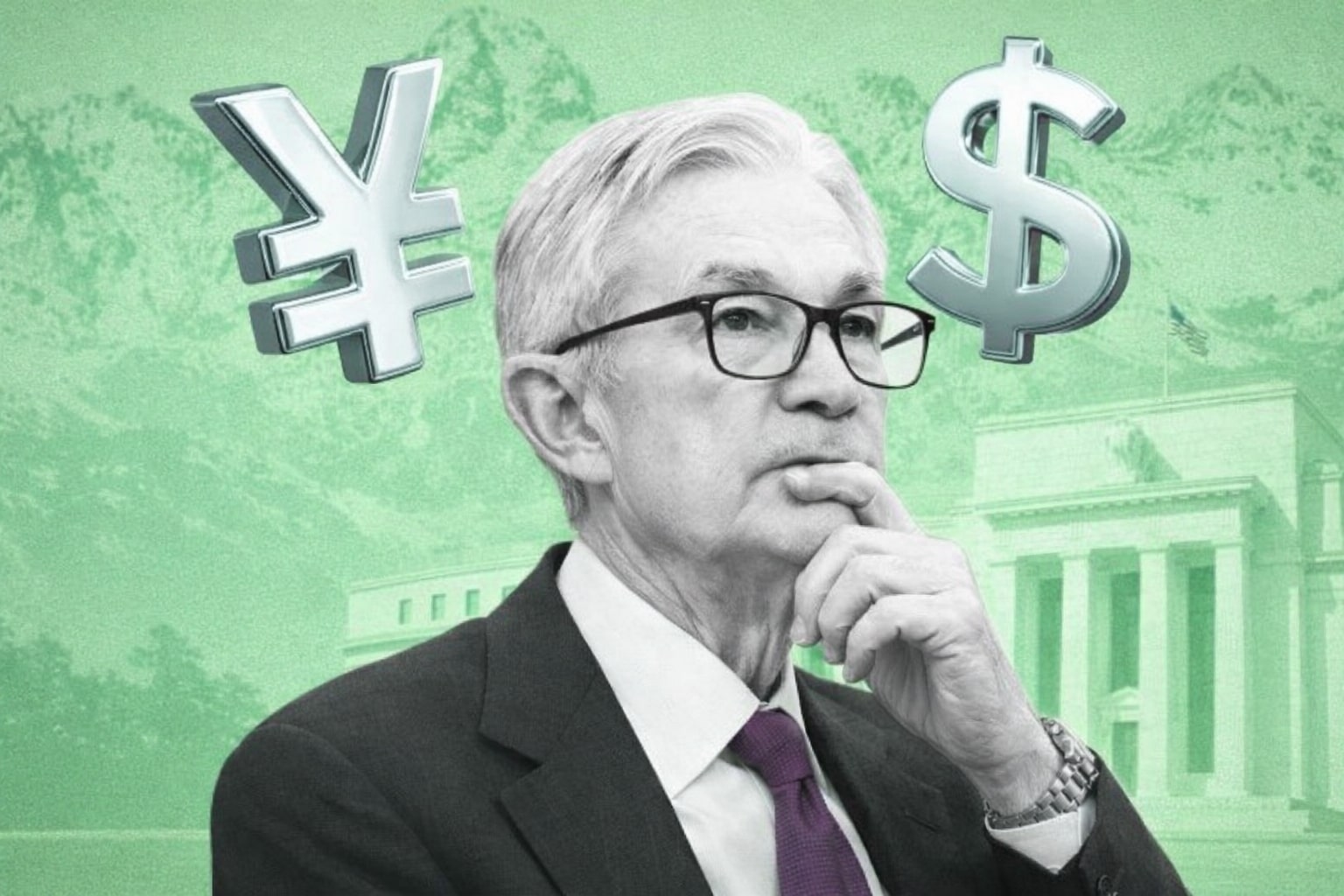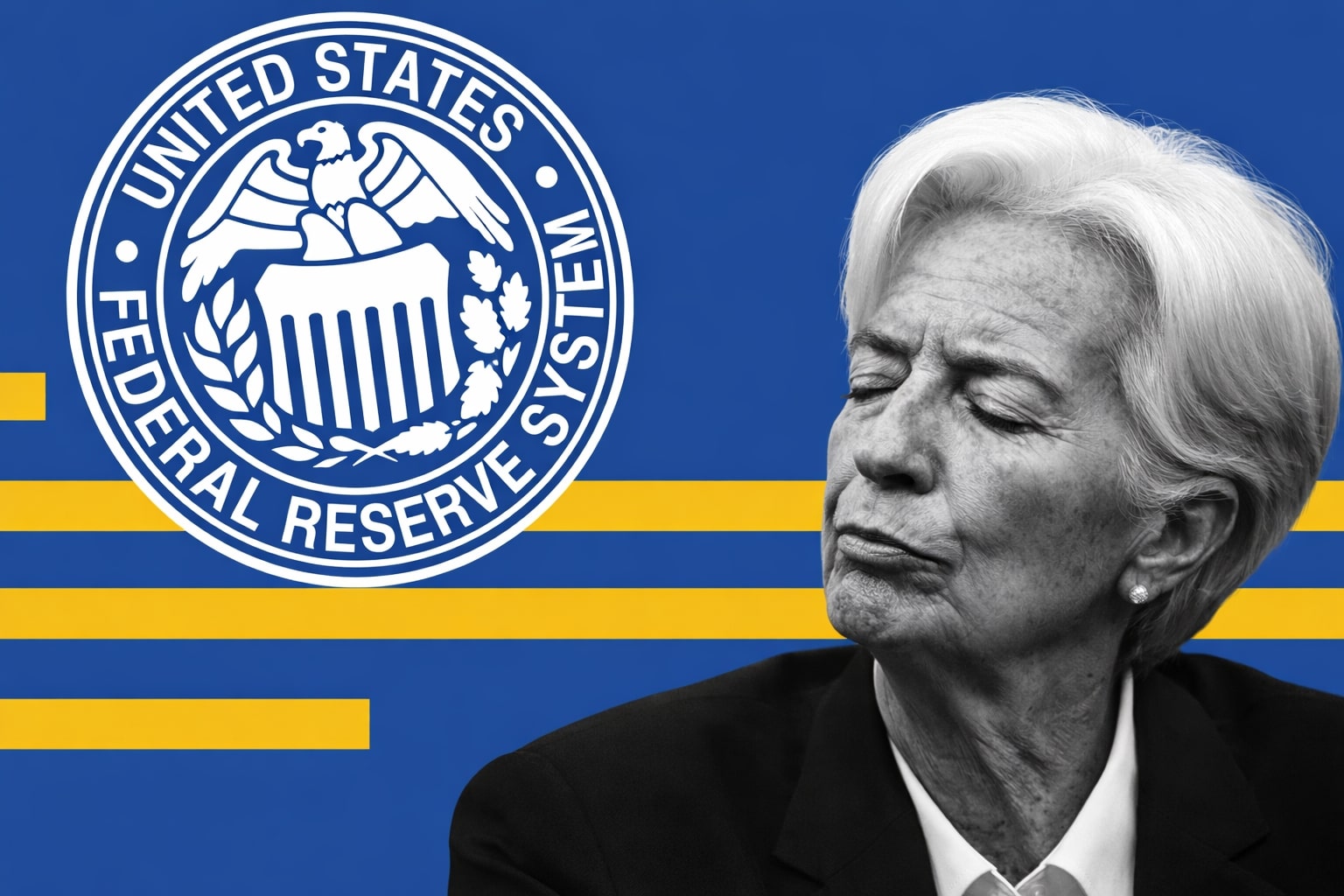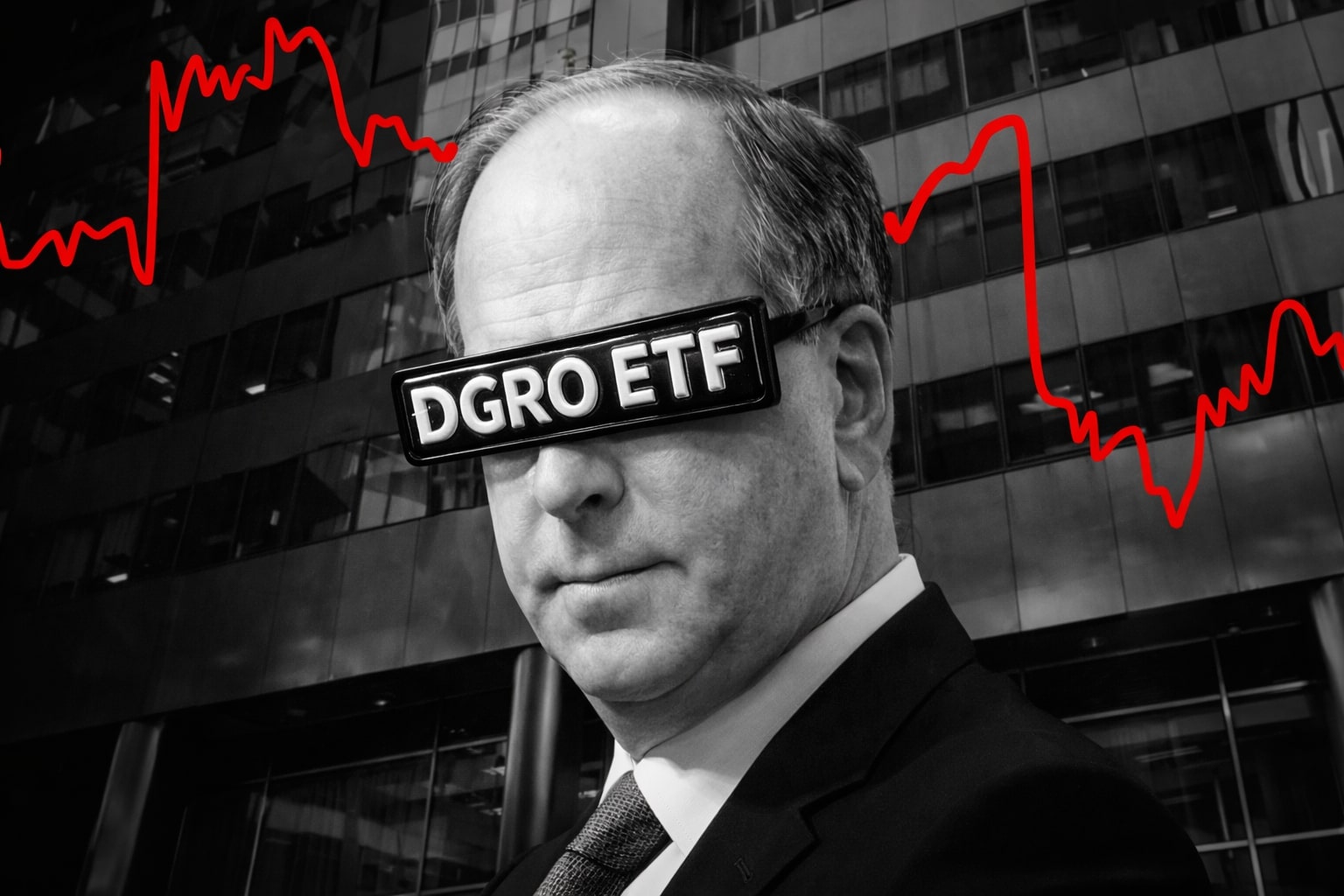
GBP/USD Price Forecast - Pound Steadies Near 1.34 as Traders Await Fed Cut and U.K. CPI
Sterling consolidates in a tight 1.3350–1.3495 range as inflation data and Fed policy define the next breakout direction | That's TradingNEWS
GBP/USD Price Forecast – Pound Faces Tight Range as Fed Cut Looms and UK Data Intensifies Volatility
GBP/USD Stuck Between Fed Rate Cuts and Political Gridlock
The GBP/USD pair closed the week near 1.3424, clinging to modest gains after a volatile stretch marked by shifting sentiment and mounting uncertainty around the U.S. government shutdown. Despite a brief midweek rally that lifted the pair above 1.3450, traders retreated to defensive positions ahead of the upcoming Federal Reserve meeting on October 29, where markets widely expect a 25-basis-point rate cut.
The extended U.S. government shutdown has paralyzed official data flow, leaving traders dependent on private indicators like the S&P Global Flash Manufacturing PMI for direction. The lack of real economic signals from Washington is amplifying risk aversion, curbing sterling’s upside momentum even as the U.S. dollar weakens across broader indices.
UK Inflation and Retail Data Drive Domestic Sentiment
Upcoming U.K. releases—including Consumer Price Index (CPI), Retail Sales, and Manufacturing PMI—will shape the pound’s short-term trajectory. The Bank of England faces renewed inflationary pressure, with annual CPI expected to hover near 2.9%, still above the BoE’s 2% target. Retail sales are forecast to contract by 0.3% month-over-month, reflecting cautious consumer behavior amid stagnant wage growth.
The pound’s resilience in the face of mixed fundamentals has surprised some institutional desks. Traders note that GBP/USD remains within the 1.3350–1.3495 corridor, a tight equilibrium zone reflecting the market’s reluctance to price aggressive moves before the Fed’s decision. Technical analysts at London-based desks point out that a sustained break above 1.3490 could trigger momentum toward 1.3600, while a slip below 1.3350 risks a retracement toward 1.3250, the October lows.
Fed Policy Uncertainty Keeps Traders Defensive
The upcoming FOMC meeting is set to dominate global markets. The expected 25 bps rate cut has already been factored into the dollar’s valuation, but traders remain focused on the Fed’s forward guidance. The uncertainty surrounding how deeply the Fed will ease through the rest of 2025 keeps volatility high across major pairs, especially those sensitive to yield spreads like GBP/USD (FX:GBPUSD).
Should the Fed signal further cuts into December, sterling could extend its recovery as rate differentials narrow. However, if the central bank adopts a more cautious stance, emphasizing inflation risks and fiscal instability from the ongoing shutdown, the greenback could regain strength, pushing the pair back toward the 1.3300 handle.
U.S. Government Shutdown and Treasury Yield Dynamics
The prolonged U.S. shutdown has left critical agencies without funding, delaying official employment, retail, and inflation data. This absence of information has heightened market reliance on Treasury yields, which rose last week, with the 2-year yield surpassing 3.45%, reinforcing near-term dollar support.
However, some traders view this yield rise as temporary. As fiscal pressure builds and the shutdown drags into its fourth week, expectations for deeper fiscal damage could weaken the dollar’s structural foundation. This dynamic has kept GBP/USD from breaking lower despite soft U.K. data, suggesting the pair’s downside remains limited unless U.S. yields surge above 3.60%.
Technical Outlook: Key Levels Define a Narrow Battlefield
Price action shows GBP/USD consolidating above its 50-day moving average (1.3370), signaling short-term stability but lacking momentum. The 1.3400–1.3450 band has acted as a pivot area for three consecutive sessions. Traders are watching 1.3360 as key short-term support—failure to hold there could expose 1.3330, aligning with early-October lows.
The Relative Strength Index (RSI) remains neutral near 48, suggesting balanced positioning between bulls and bears. Momentum studies show that institutional traders have trimmed long exposure, reflecting uncertainty rather than conviction. A close above 1.3495 would trigger a potential short squeeze toward 1.3550, while sustained pressure below 1.3350 would confirm a bearish reversal.
Read More
-
DGRO ETF Price: Is DGRO at $69.17 Still the Better Dividend-Growth Bet?
17.12.2025 · TradingNEWS ArchiveStocks
-
XRP Price Stuck Below $2 As XRPI at $10.74 and XRPR at $15.26 Ride $1B+ ETF Inflows
17.12.2025 · TradingNEWS ArchiveCrypto
-
Natural Gas Price Forecast - NG=F Steady Near $4 as TTF Jumps on Colder Forecasts and LNG Outage Risk
17.12.2025 · TradingNEWS ArchiveCommodities
-
USD/JPY Price Forecast: USDJPY=X 155.50 Pivot Before BoJ Hike and US CPI
17.12.2025 · TradingNEWS ArchiveForex
Macro Factors: Tariff Tensions and Sterling’s Broader Correlation
Fresh comments from the U.S. administration regarding tariff expansion on Chinese imports briefly boosted the dollar midweek but failed to alter the medium-term trend. The pound remains sensitive to U.S.-China trade rhetoric, which influences global risk appetite. While the DXY index rebounded to 98.50, the move lacked follow-through, reflecting that traders are prioritizing Fed policy rather than geopolitics in current pricing.
From a broader macro lens, the U.K.’s political calm contrasts sharply with the U.S. fiscal deadlock. This relative stability, combined with signs of recovering industrial activity, offers a cushion for sterling. Industrial Orders Expectations in the U.K. improved to -4 in October from -11 the previous month, hinting at a slow rebound in manufacturing demand.
Market Psychology and Institutional Flow
Institutional reports suggest large positioning adjustments from hedge funds seeking protection ahead of the Fed’s decision. Data compiled from prime brokers show an increase in option volatility premiums around the 1.3400 strike, implying traders expect larger swings in the coming sessions.
Liquidity has thinned notably in late New York sessions, amplifying intraday spikes. Traders report that algorithmic funds remain net neutral, indicating uncertainty rather than directional conviction. This aligns with speculative range trading dominating the 1.3360–1.3480 zone, reinforcing the notion that market participants await a catalyst.
Technical Scenarios Ahead of Fed Decision
If the Fed delivers a dovish message emphasizing slowing growth and a willingness to maintain policy flexibility, GBP/USD could break above 1.3500 and test the 1.3570 barrier, a level last seen in late August. A hawkish surprise, however, could trigger immediate selling, pushing prices below 1.3330 and targeting 1.3250—a full retracement of this month’s rally.
Volume data from the CME futures market show a 15% increase in open interest on pound contracts last week, confirming that traders are positioning for volatility rather than continuation. Short-term sentiment leans neutral-to-bullish, with risk skew tilted toward an upside breakout if the Fed prioritizes growth support over inflation caution.
Outlook and Strategic View
The balance of factors—Fed uncertainty, U.K. inflation persistence, and limited U.S. data visibility—points to a continuation of range-bound trading in the short term. However, the potential for a dovish Fed pivot could tilt sentiment in favor of sterling. Unless U.K. data sharply disappoint, the pound appears fundamentally supported above 1.3350, with scope for gradual appreciation toward 1.3600 once policy clarity returns.
The near-term equilibrium remains fragile, yet traders who can withstand short-term volatility may find the GBP/USD pair undervalued relative to longer-term rate expectations.
Verdict: Buy – Limited Downside, Potential Rebound Toward 1.3600 if Fed Confirms Dovish Bias.



















